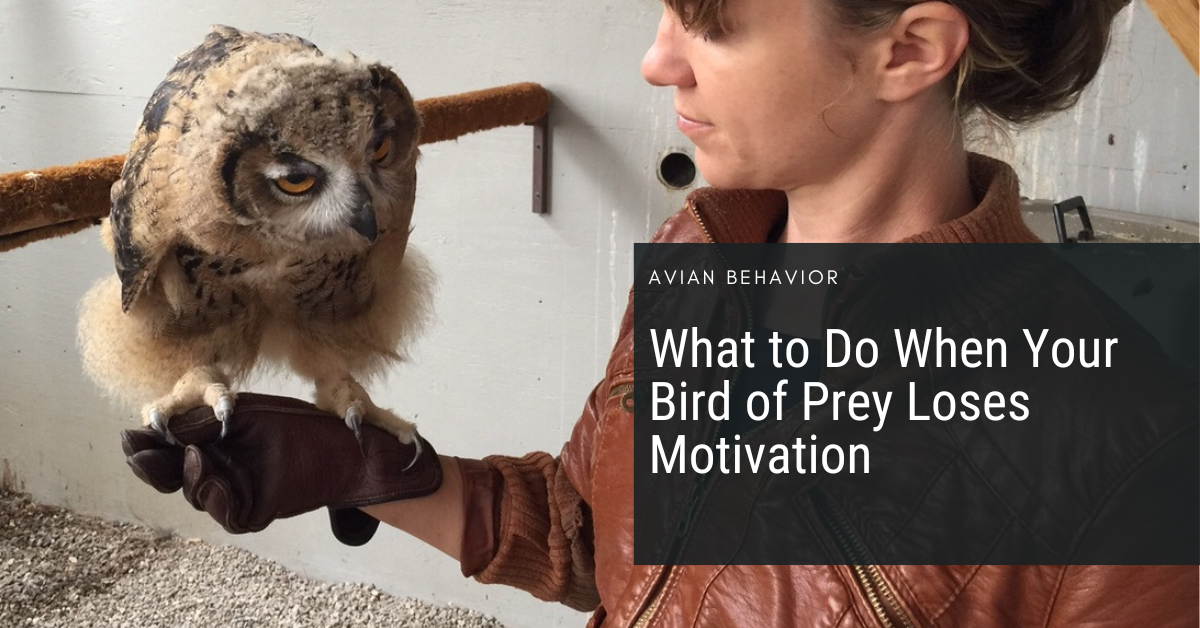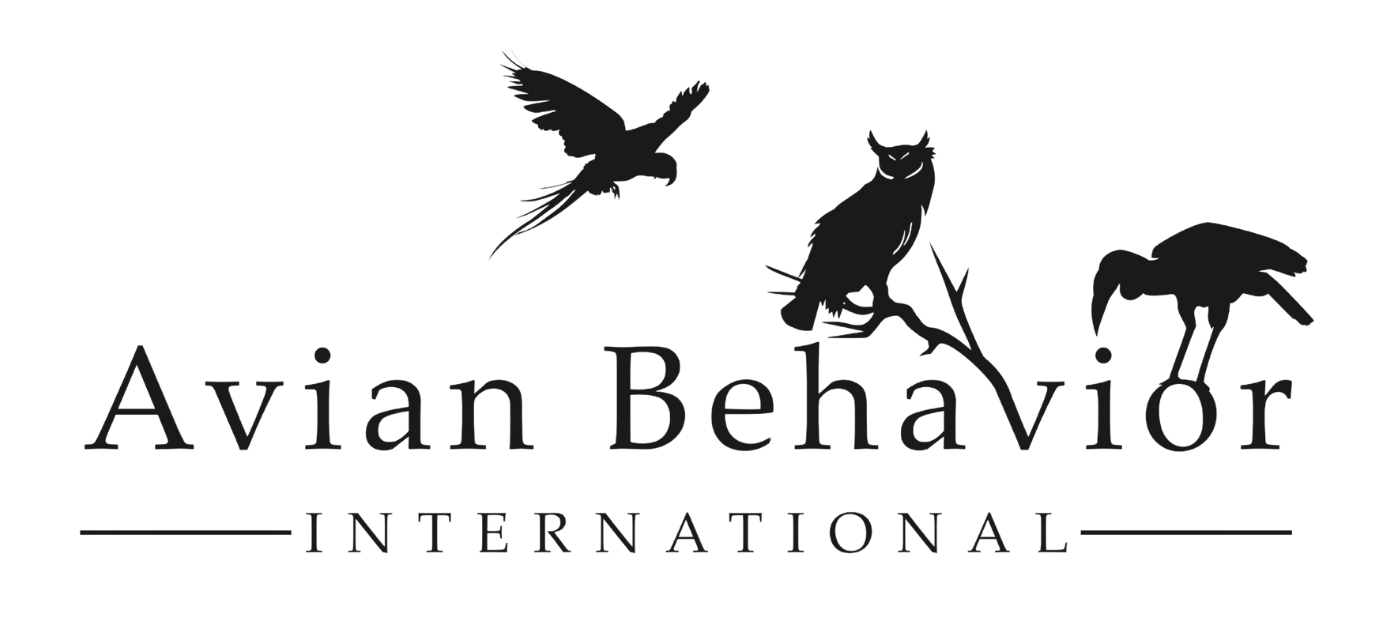
20 Jun What to Do When Your Bird of Prey Loses Motivation
You know that feeling when a bird you’ve worked with for months suddenly acts like they’ve never seen a glove before? Or the crate they’ve entered a hundred times is now radioactive? Yeah. That.
Loss of motivation is one of the most common—and frustrating—challenges in bird of prey training. And it rarely has one single cause.
If you’re a trainer, educator, or falconer, this isn’t just a theoretical problem. This is real life, real birds, and real sessions where nothing is going according to plan. So let’s get into it—how we understand motivation, how to troubleshoot when it disappears, and how to rebuild it without burning the relationship to the ground.
The 3 Usual Suspects When Motivation Drops
When a bird hesitates, it’s rarely random. And it’s almost never about the behavior itself. Most often, it’s something in the setup. Here are the three most common culprits I see:
1. The Perch Placement Is Off
Sometimes the answer is as simple as: the bird doesn’t like where the perch is. In our session with the Harris’ Hawk, just shifting one perch — literally moving it a foot — changed the whole dynamic. He hopped right after that. No extra prompting. No fancy food. Just better flow.
2. Yesterday’s Session Ended Too Late
This one’s subtle. If we push for one more rep the day before, we might walk away feeling good — and the bird walks away feeling overdrawn. That can show up the next day as hesitation, reduced engagement, or a general “meh” vibe.
3. The Energy in the Room Changed
This is especially true for sensitive birds. New observers, odd sounds, unfamiliar lighting — it can all shift how your bird feels about taking a risk. A behavior that felt fine yesterday might suddenly feel uncertain today.
What to Do Instead of Re-Cueing
Here’s what not to do: keep cueing, raise your energy, or try to “win” the interaction.
Instead:
- Pause. Don’t repeat the cue. Give the bird space to think.
- Reassess the setup. Do you need to move a perch? Adjust your position? Open up a better line of sight?
- Look for a smaller win. Instead of pushing for the full behavior, reinforce a precursor. A lean. A look. A shift in weight.
- Respect the opt-out. If the bird is telling you no, don’t take it personally. Take it seriously.
That’s exactly what we did with our Harris’ Hawk. When he didn’t hop, we didn’t insist. We changed the perch layout — and just like that, we got the hop.
Not because we convinced him. Because we heard him.
This Is What Builds Confidence
The goal isn’t just to get the behavior. It’s to create a bird that wants to offer it. That trusts the process enough to lean in — even when they’re unsure.
When a bird doesn’t respond, it’s not a test of control. It’s an invitation to train better. To listen harder. To build a history that says: I see you. I’ll wait.
That’s where the real magic happens.
Want to go deeper?
Inside the Avian Behavior Lab, we break these concepts down step by step — from what to look for when motivation wavers to how to structure sessions that build resilience over time.

